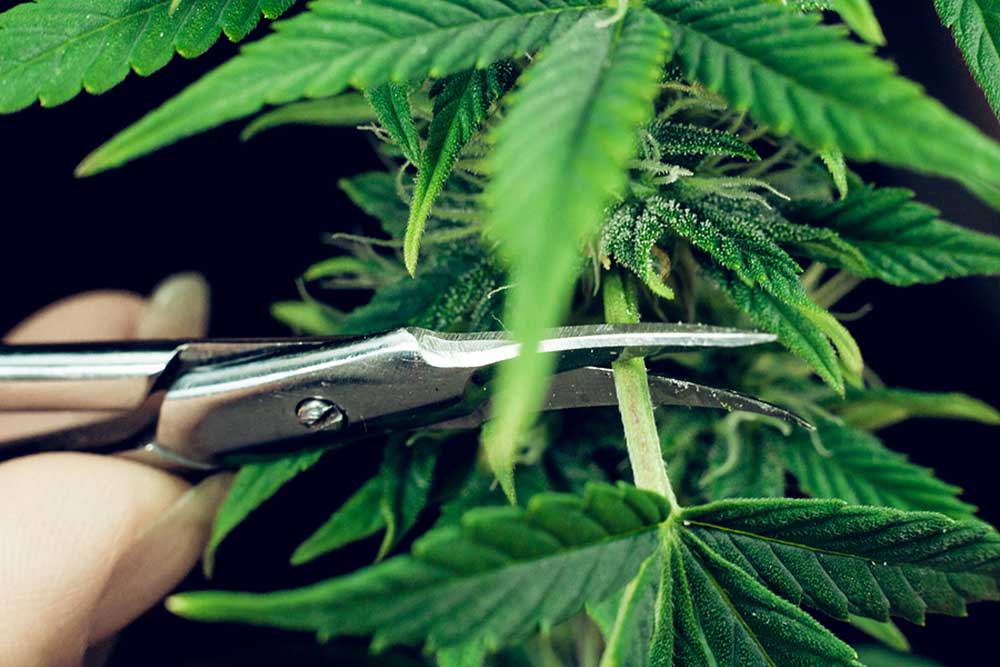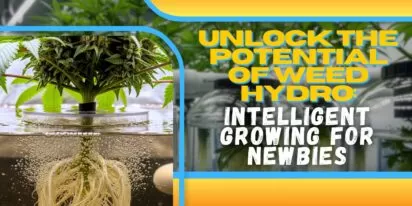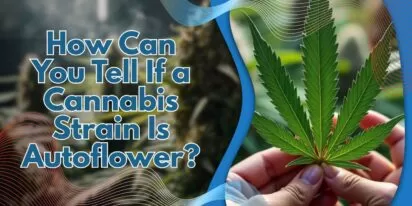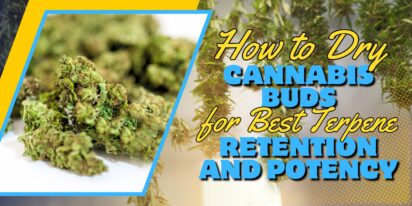Are You 21 Or Over?
YesOr
No By clicking yes, you certify that you are over 21 years old. By using this website, you agree to our legal disclaimer.Table of Contents

All weed growers are looking for healthy plants and better yields. There are many ways to achieve these like feeding your plants the right nutrients, using correct lighting, and growing in the best soil but there is one thing that experts prefer to use and this is all about pruning cannabis.
You may have used this technique in growing other plants before as pruning can boost growth and yields of vegetables, fruits, and even flowering plants. In pruning cannabis, it’s the same thing.
With pruning, you can control unruly plants and at the same time improve yields. We will discuss these in more detail as we check out the correct ways of pruning cannabis plants.
Pruning is cutting the overgrowth parts of plants. Usually, the large fan leaves are removed to improve airflow through the plant’s canopy. It’s also possible to remove smaller leaves and stem to maximize the growth and development of the buds during flowering time.
Some cannabis growers who use a hydroponic system also prune the roots. This is done to improve nutrient absorption and to avoid root rot.
Pruning cannabis is not recommended for beginners because there is a tendency for first-time growers to overdo pruning. Also, think about cannabis as very sensitive plants. These plants may only suffer from stress if you’re not careful. Stress can be very damaging to cannabis plants as this can affect growing and flowering. Stress can even lead to the development of hermaphrodite plants.
In short, pruning needs time to learn and to get accustomed to. You need years of practice. Having many years of experience pruning other types of plants can also prepare you when it comes to pruning cannabis plants.
Pruning has many advantages to cannabis plants. The following are just among the few.
The most common reason why growers prune is to control plant growth. Usually, Cannabis sativa plants are pruned to control their wild growth. When sativas are left to their own devices these plants can grow taller than 10 feet! Cannabis indica plants also need pruning. Although these plants can only grow as high as 3 to 4 feet, these can become very bushy and too dense which can lead to moisture build-up inside the plant canopy. Pruning can make a compact plant neater and promotes better form.
Pruning opens up dense plant sections to reveal immature buds. With enough lighting, you can improve the size of these buds and thus you can enhance your harvest many times. And by cutting overgrown plant parts you can greatly reduce your plants’ chance of developing molds and pests. You can reduce moisture and humidity so you can avoid mold growth entirely.
As mentioned earlier, removing large fan leaves and another overgrowth allows air to move through the canopy and dry up moisture. With no moisture, you can greatly reduce mold and mildew which depend on moisture and dampness to develop.
Aside from being a psychoactive component of weed, THC or tetrahydrocannabinol also has pest control properties. THC can drive away common pests like spider mites, aphids, caterpillars and crickets. THC can be improved by pruning. Cannabis plants don’t have enough THC until these reach their third month in the vegetative stage. Plants develop more THC to protect themselves from leaf-eating pests that start being active during this time.
humidity and air circulation Since pruning removed large fan leaves, light can penetrate in the plant canopy better. Removing large leaves will also reduce moisture and this will enhance humidity levels which plants need to live healthily. Finally, removing large fan leaves will also help air to pass through. And the air in slow steady movements can strengthen the soft stems and branches of cannabis plants.
Pruning cannabis can greatly enhance plant health. You can prevent pests, avoid moisture, and improve lighting which greatly helps plants’ manufacture their food. All these can Pruning improves THC production
Things you’ll need to prune your plants Now that you know the advantages of pruning let’s prepare for this activity with the following tools
Why maintain a clean and sterile environment? If you use dirty or unsanitary tools to cut your plants, your plants risk contacting cannabis plant diseases and molds.
Pruning may sound very straightforward but there’s so much to it aside from just cutting overgrowth. Follow these simple steps to make pruning faster and more efficient.
1. Prepare the plant you will prune – select the plant/ plants you want to prune. Separate these plants from the others and place these on top of a table at eye-level. This position will allow you to get a closer look at your plants better and cut or prune your plants safely.
2. Prepare your pruning tools – sterilize your cutting tools by first brushing it with soap and water and applying 70% isopropyl alcohol. If you’re using new blades or knives there’s no need to prepare these. Make sure your tools are sharp as they are clean and sterile. Also, prepare lamps/ lighting as well as containers and water if you wish to use the cuttings as clones.
3. Cut… – don’t pick the leaves and stems with your hand because doing so can damage the cut tips and stress your plants. Take the stem or leaf with one hand and the cutting tool in the other hand. Make a swift diagonal (slanted cut) on the part. This cut exposes a larger surface area for water and nutrients to easily move through. This is very beneficial in case you want to use these parts for cloning. Remember, a swift and clean cut will do it.
4. Save cuttings for growing clones – the cuttings can be used to grow another plant, a cloned plant. Clones skip the germination and seedling phase but these need to grow a good set of roots and strong stems. Place the cuttings in a container with water immediately after you cut these from the mother plant. Reuse these cuttings ASAP.
5. Water your plants – right after pruning, give your plants clean pH- balanced water. This will replenish lost moisture and prevent stress and shock.
A lot of successful growers make use of special pruning techniques to enhance bud growth here are some of them:
This is one of the most common pruning techniques as this can improve bud size, increase yields, and improve plant shape.
Topping is done by cleanly cutting just below the bud site. Doing so will yield two bud sites. As the two bud sites become more prominent, you must carefully separate the two with the use of some pegs and threadWhen
As you can see, topping can greatly enhance the yield of cannabis plants and would be great for strains that have low yields. Topping can be done over and over again to increase the number of bud sites.
When is the best time to start topping? We recommend that you start topping as soon as your plants are strong enough. When you’re using clones, the earlier the better.
When using seedlings, wait till the young plant has developed 4 to 5 internodes. The plants should grow strong roots. Just wait till the roots are larger and stronger before you prune.
The topping should be done cautiously because overdoing it or having no prior training or knowledge about topping could be dangerous. Cannabis plants are very sensitive plants and cutting or pruning these plants can bring too much stress and this stress can lead to poor growth and development. We recommend only an expert perform topping or practice well before you use this technique on your cannabis plants.
Fimming is similar to topping as it can enhance yields. But the difference is that fimming cuts directly under the bud site resulting in four different growing nodes.
Fimming is much more delicate and a lot more stressful to plants and therefore you need to do this skillfully and very carefully. And similar to topping, we don’t recommend this for beginners.
Just to describe what happens in fimming, you need to cut directly under the bud site. Make a sharp and swift cut to create four different nodes. Wait a few hours and these nodes will become more prominent and will soon be ready for training. Use small pegs and some thread to tie the four nodes and separate them. Do this very carefully.
Fimming may be done unlimitedly and you can start after your young plants have developed 4 to 5 internodes. Wait till the young plant has developed strong roots before fimming.
Pruning cannabis must be done as soon as the plant is strong enough but do this cautiously. When you prune your plants well, you can expect better plant health and enhanced yields.

Curious about growing weed in a healthy, effective way? Welcome to the realm of weed hydro! This method uses water instead of soil, delivering n

Peyote Zkittlez is a unique cannabis strain that has quickly gained dedicated followers among enthusiasts and patients alike. Its parentage—Zk

As growers, we want strains that work well, are strong, and are of good quality. Autoflowering cannabis strains are a big step forward for both

Pot growers always ask the same basic question: How much weed does a weed plant produce? The answer is complex and depends on a multitude of var

Ever had the room spin after a few hits? You're not alone. Figuring out how to prevent getting dizzy high can make your cannabis experience a wh

Drying cannabis properly is a critical process in preserving the plant's full aroma and flavor and its psychoactive abilities. Tampering with th

Ever caught yourself a bit too high and all of a sudden in need of being normal? Whether you're heading out for munchies or bumping into someone

Looking for sage advice on how not to get pinched with weed without batting an eye? Attempting to protect your stash from gossipy roommates, sno

Nutrient lockout, also known as nutrient binding or chemical antagonism, is a significant issue in cannabis cultivation that negatively impacts

Germination is the most critical initial stage in growing healthy, high-quality cannabis plants. During germination, the dormant seed becomes a
Are You 21 Or Over?
YesOr
No By clicking yes, you certify that you are over 21 years old. By using this website, you agree to our legal disclaimer.
Excellent blog here Also your website loads up very fast What web host are you using Can I get your affiliate link to your host I wish my web site loaded up as quickly as yours lol
Your writing is not only informative but also incredibly inspiring. You have a knack for sparking curiosity and encouraging critical thinking. Thank you for being such a positive influence!
Simply wish to say your article is as amazing The clearness in your post is just nice and i could assume youre an expert on this subject Well with your permission let me to grab your feed to keep updated with forthcoming post Thanks a million and please carry on the gratifying work
Somebody essentially lend a hand to make significantly articles Id state That is the very first time I frequented your website page and up to now I surprised with the research you made to make this actual submit amazing Wonderful task
Your blog is a beacon of light in the often murky waters of online content. Your thoughtful analysis and insightful commentary never fail to leave a lasting impression. Keep up the amazing work!
Thank you for the auspicious writeup It in fact was a amusement account it Look advanced to more added agreeable from you By the way how could we communicate
Your blog is a constant source of inspiration for me. Your passion for your subject matter shines through in every post, and it’s clear that you genuinely care about making a positive impact on your readers.
Your blog is a constant source of inspiration for me. Your passion for your subject matter is palpable, and it’s clear that you pour your heart and soul into every post. Keep up the incredible work!
Your articles never fail to captivate me. Each one is a testament to your expertise and dedication to your craft. Thank you for sharing your wisdom with the world.
Your blog is a testament to your dedication to your craft. Your commitment to excellence is evident in every aspect of your writing. Thank you for being such a positive influence in the online community.
Your writing has a way of resonating with me on a deep level. I appreciate the honesty and authenticity you bring to every post. Thank you for sharing your journey with us.
Your blog is a true gem in the world of online content. I’m continually impressed by the depth of your research and the clarity of your writing. Thank you for sharing your wisdom with us.
Hi i think that i saw you visited my web site thus i came to Return the favore Im attempting to find things to enhance my siteI suppose its ok to use a few of your ideas
Somebody essentially help to make significantly articles Id state This is the first time I frequented your web page and up to now I surprised with the research you made to make this actual post incredible Fantastic job
Usually I do not read article on blogs however I would like to say that this writeup very compelled me to take a look at and do so Your writing taste has been amazed me Thanks quite nice post
Your blog has quickly become one of my favorites. Your writing is both insightful and thought-provoking, and I always come away from your posts feeling inspired. Keep up the phenomenal work!
Every time I visit your website, I’m greeted with thought-provoking content and impeccable writing. You truly have a gift for articulating complex ideas in a clear and engaging manner.
Hey there You have done a fantastic job I will certainly digg it and personally recommend to my friends Im confident theyll be benefited from this site
I have read some excellent stuff here Definitely value bookmarking for revisiting I wonder how much effort you put to make the sort of excellent informative website
Nice blog here Also your site loads up very fast What host are you using Can I get your affiliate link to your host I wish my site loaded up as quickly as yours lol
What i do not understood is in truth how you are not actually a lot more smartlyliked than you may be now You are very intelligent You realize therefore significantly in the case of this topic produced me individually imagine it from numerous numerous angles Its like men and women dont seem to be fascinated until it is one thing to do with Woman gaga Your own stuffs nice All the time care for it up
Your blog is a beacon of light in the often murky waters of online content. Your thoughtful analysis and insightful commentary never fail to leave a lasting impression. Keep up the amazing work!
Your blog is a breath of fresh air in the often stagnant world of online content. Your thoughtful analysis and insightful commentary never fail to leave a lasting impression. Thank you for sharing your wisdom with us.
Your blog is a beacon of light in the often murky waters of online content. Your thoughtful analysis and insightful commentary never fail to leave a lasting impression. Keep up the amazing work!
Usually I do not read article on blogs however I would like to say that this writeup very compelled me to take a look at and do it Your writing style has been amazed me Thank you very nice article
Your writing has a way of resonating with me on a deep level. I appreciate the honesty and authenticity you bring to every post. Thank you for sharing your journey with us.
This hydroponics guide is quite the buzz, seriously! Who knew growing weed without dirt could be so complicated yet potentially rewarding? The breakdown of systems like DWC and NFT is helpful, though I suspect my cat might confuse the air pump for a toy. The idea of cleaner buds is tempting, especially since explaining hydro weed to my non-growing friends might get messy. And the bit about potential dizziness from hydro weed? Perfect, now I have an excuse for why I always stumble a bit after a grow session. Still, the promise of faster grows and higher yields is hard to ignore, even if it means more trips to the pH meter than to the coffee shop. Overall, a cultivating read for the curious grower!